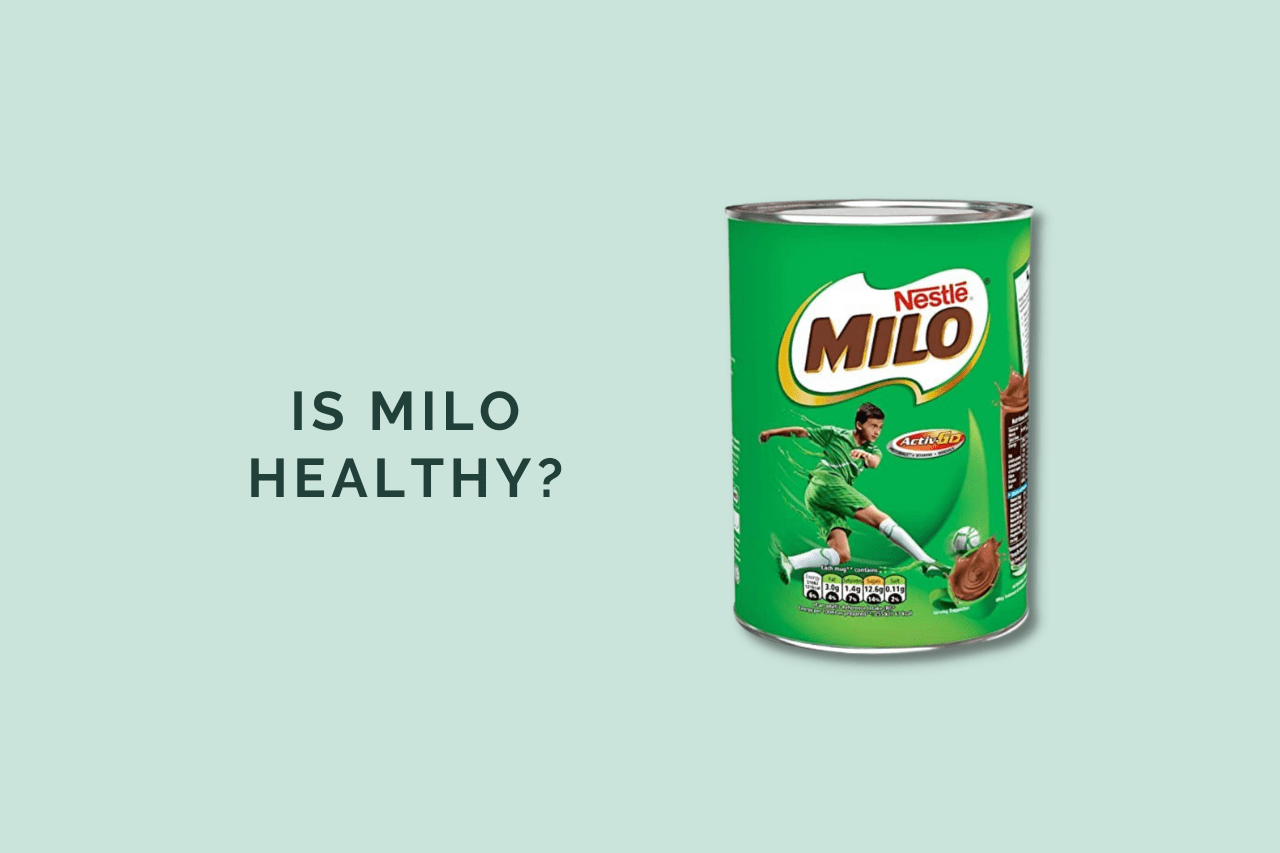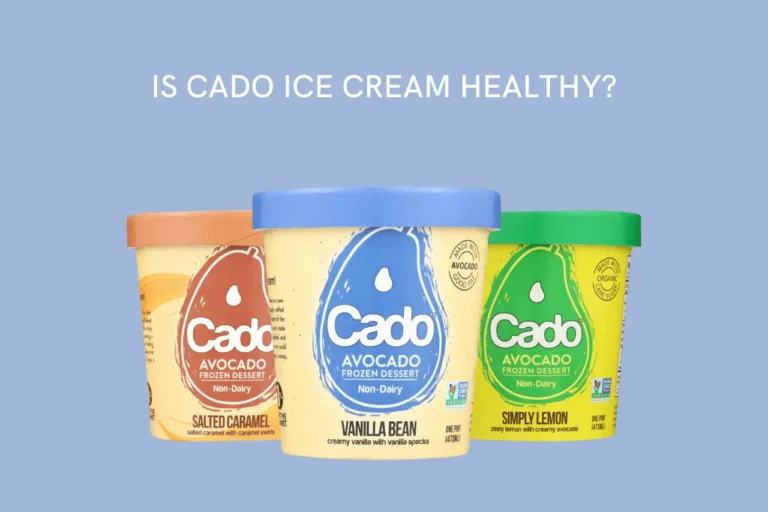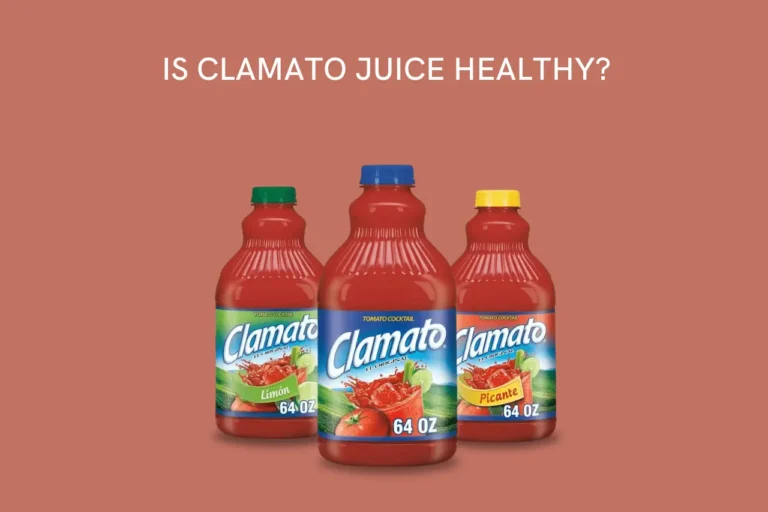Milo is a popular chocolate-flavored malt-based drink that has been around for decades. It was developed by Nestle in Australia in the 1930s and has since become a popular choice for a quick and easy hot beverage breakfast for kids and adults.
It is made from malt, milk, sugar and cocoa powder and is fortified with vitamins and minerals.
And while it is often marketed as a nutritious drink, there are conflicting opinions about whether Milo is healthy for you.
In this post, I have shared the pros and cons of Milo that will help you decide whether or not it is healthy for you.
So let’s begin.
Important note: Milo’s nutritional value and ingredients can vary depending on the country in which it is available. I have used Milo from the official website for this post.
Nutritional value of Milo
Here is a nutritional breakdown of Milo in 100g:
- Calories: 413
- Carbohydrates: 67.1g
- Sugar: 40.5g
- Fats: 9.9g
- Protein: 11.7g
- Fiber: 4.5g
- Calcium: 520mg
- Iron: 11.5mg
- Sodium: 150mg
Other nutrients that are present in Milo includes phosphorus(490mg),vitamin D(5ug),vitamin C(60mg), vitamin B2(1.1mg), Niacin(14.7mg), vitamin B6(1.3mg), and vitamin B12(1.8ug).
Ingredients in Milo
The ingredients in Milo vary depending on the specific product and the country in which it is sold.
However, the main ingredients typically found in Milo include:
Malt extract: This is made from barley(a whole grain) that has been sprouted and dried. It is a rich source of complex carbohydrates, proteins, and vitamins and is mainly used as a flavoring agent.
Cocoa: This is made from the roasted and ground beans of the cocoa tree. It is a source of antioxidants and flavonoids, which have potential health benefits.
Skim milk powder: This is made by removing the water and fat from milk, leaving a dry powder rich in protein and calcium.
Palm oil: It is a type of vegetable oil extracted from palm trees’ fruits.
Sugar: Milo uses table sugar as one of the main ingredients to provide sweetness.
Vitamins and minerals: Milo may also contain added vitamins and minerals, such as Iron, potassium, calcium, and vitamin D.
Other ingredients that may be included in Milo products are glucose syrup and acidity regulators.
It is essential to read the label on the specific Milo product you are consuming to get an accurate list of ingredients.
Pros of Milo
Good source of Iron
Milo is a good source of Iron, containing 3.4mg per 30g serving, about 39% of the daily need for men and 23% for women.
Good for bones
Milo is good for your bones as it is fortified with bone-friendly nutrients like calcium and vitamin D. The good thing is that the levels of these nutrients are above average.
A single 30g serving provides 150mg of calcium which is 15% of the daily need, and 1.5ug of vitamin D, which is also 15% of the daily requirement.
Contain B vitamins
Milo is a good source of 4 B vitamins: B2, B3, B6, and B12. These vitamins play essential roles in the body and are present in Milo at 20-30% of the daily recommended value.
When considering nutrition, Milo is neither the best nor the worst on the market. It does contain some vitamins and minerals at above-average levels.
Cons of Milo
Extremely high in sugar
The biggest reason that makes Milo questionable to your health is its extremely high sugar content.
A 30g serving of Milo comes with 12.2g of sugar, equivalent to almost 4 teaspoons.
If compared to coke, Milo has about 400% more sugar per serving.
For children, it is recommended to limit daily sugar intake to 24g. However, if they drink Milo on a daily basis, they would be consuming half of their daily sugar limit from just one drink.
In the long run, consuming too much sugar increases the risk of weight gain, obesity, diabetes and heart disease.
What’s more, sugar has been known to interfere with calcium absorption and contribute to low bone density and an increased risk of fractures[1].
That means even though Milo has good calcium levels, its high sugar content cancels out those benefits.
Not good for diabetics
Milo is not a good choice for people with diabetes or other blood sugar disorders because it has high levels of sugar and maltodextrin, which can quickly raise blood sugar levels.
Maltodextrin is a white powder made from corn, rice and potato starch. It’s commonly used as a filler or sweetener in packaged foods. It has a high glycemic index (106-136), which means it’s absorbed quickly by the body and can raise blood sugar levels rapidly.
In addition, some people are sensitive to maltodextrin and consuming food containing it can result in gastrointestinal symptoms such as bloating, gas and diarrhea.
Gut issues
Milo may taste good, but it’s not necessarily good for your gut. That’s because it contains maltodextrin.
Some early studies suggest that maltodextrin can reduce the number of good bacteria and increase the harmful bacteria in your gut.
Note: Maltodextrin is considered safe for consumption in small amounts. However, because many packaged foods contain this additive, it can be challenging to control your intake.
Use of palm oil
Palm oil is an edible oil extracted from the palm tree’s fruit. It is a cheap oil to produce, which is why it is used in many food products.
However, there are some health concerns associated with palm oil consumption.
One concern is that palm oil is high in saturated fat, and consuming too much of it can elevate LDL cholesterol levels and increase the risk of heart disease.
Another concern is that oil palm cultivation has been linked to deforestation and habitat destruction. This can have negative impacts on local ecosystems and wildlife.
It would be better if Milo used healthier oils such as olive or canola oil.
Is Milo good for weight loss?
Milo is not a good choice for weight loss due to its high sugar and calorie content. However, if you can manage your calorie intake, you can include Milo in your diet without worrying about weight.
On the other hand, individuals with sedentary lifestyles should avoid or limit their consumption of Milo in their diet.
Are there any healthy alternatives to Milo?
Milo markets itself as being a nutritious beverage. However, when compared to other similar drinks such as Horlicks, Complan and Boost, it falls short in terms of nutrition.
Here is a quick nutritional comparison of Milo to other popular health drinks.
| Nutrition | Milo | Horlicks(classic malt) | Complan |
|---|---|---|---|
| Calories | 413 | 377 | 419 |
| sugar | 40.5g | 13.5g | 21.8g |
| Fat | 9.9g | 2g | 11g |
| Protein | 11.7g | 11g | 18g |
| Calcium | 520mg | 741mg | 800mg |
| Iron | 11.5mg | 26mg | 13.5mg |
Also read: Complan vs Horlicks: Which One is Better Nutritional Drink?
Final words: Should you drink Milo?
While Milo may taste great and have an average level of nutrients, the truth is that it’s extremely high in sugar and contains some risky ingredients like maltodextrin and palm oil.
In fact, Milo is the worst in the market in terms of sugar.
So should you drink Milo?
If look from from a nutritional standpoint, it’s not the best choice. However, if you enjoy the taste and still want to include it in your diet, you should consume it in moderation and balance it with other healthy foods.
Though there are plenty of healthier alternatives to Milo, which are low in sugar and provide more nutrients.
Found this information helpful? Share it.
Here are a few other posts that might be helpful for you.
- Are Coco Pops Healthy? The Truth About This Breakfast Cereal
- Is Minute Maid Zero Sugar Healthy? Let’s Find Out!
- The Truth About Popcorners: Are They Really Healthy?
- Is Thums Up Good For Health? 5 Side Effects To Be Aware Of
- Is Tropicana Juice Healthy As Everyone Thinks? Let’s Find Out
FAQs about Milo
Milo does not caffeine as the main ingredients but it contains cocoa which naturally has caffeine. A 100g serving of Milo contains anywhere around 0.01-0.02g of caffeine.
Milo may not be good for individuals with diabetes due to its high sugar content and the presence of maltodextrin, which can raise blood sugar levels and potentially exacerbate diabetic conditions.
A 100g serving of Milo contains 413 calories.
As per Milo’s official website, the recommended intake is 30g a day.
The age limit for drinking Milo is 6 years and older.
Drinking Milo for breakfast may not be the best choice due to its high sugar content and average nutrient value. Despite this, If you choose to include Milo in your breakfast, it is important to balance it with other healthy options





